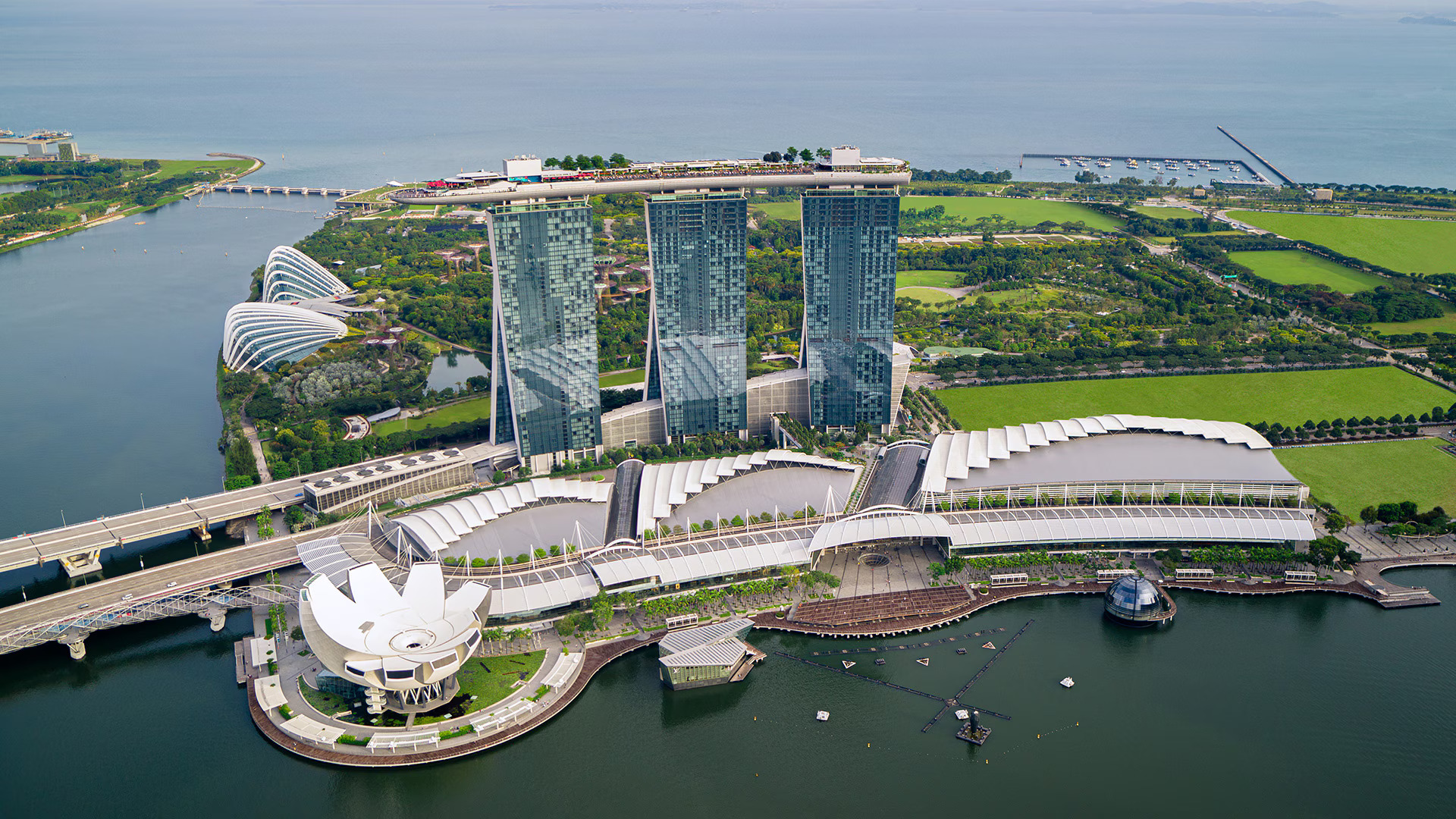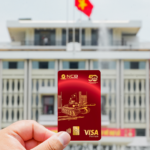Latest Progress on Vietnam’s First Sea Reclamation Mega-City
On April 19th, Ho Chi Minh City commenced construction on the Can Gio Sea Reclamation Urban Area, a massive seaside metropolis project unprecedented in Vietnam.
Spanning 2,870 hectares with a projected population of nearly 230,000 and an annual tourist attraction of 8-9 million visitors, this endeavor marks a pivotal moment in the city’s “embrace the sea” strategy.

Nearly a month after the project’s commencement, land reclamation through sand pumping and temporary dike construction is underway with dedicated machinery, equipment, and labor.
Priority is given to Division A, spanning over 953 hectares, with over 10 hectares of sand already in place. The construction progress is remarkably swift, aligning with the investor’s “swift” motto.
The Can Gio Sea Reclamation City boasts a massive scale in several aspects. Firstly, it is Vietnam’s first ESG (environment, social, governance) super city, aiming to harmonize development and nature conservation. With a total area of 2,870 hectares, it dwarfs existing urban areas in Ho Chi Minh City, such as the Nam Saigon project from the 1990s, which spanned only 2,000 hectares.

Machinery deployed for sand pumping from the sea – Image credit: YouTube user Đỗ Hoàng Sinh
Over 1,300 hectares of newly reclaimed land are elevated above 2.9 meters above sea level, providing a rare opportunity for the city’s land bank. Its coastline spans tens of kilometers, with the eastern shore facing the East Sea (Dong Tranh River estuary) and the western shore bordering Can Thanh town, allowing for multiple direct interfaces with the sea, beaches, and waterfront landscapes.
Planning experts anticipate that the urban area, with its mangrove forest recognized by UNESCO, will become the city’s “second lung,” augmenting the existing Can Gio forest’s green and clean space.
The project’s development orientation is smart-eco-resort, maximizing renewable energy (offshore wind power), prioritizing green transportation (an overhead metro directly connecting the city center), and eco-friendly materials. Notably, Vingroup, the investor, pledges to invest in an offshore wind farm 10 kilometers from the shore to provide clean energy for the entire urban area, positioning the project as Vietnam’s leading “green development” symbol.
In terms of superior features, the planning proposes diverse functional divisions: ecological residential areas, tourism and resort areas, financial and economic centers, smart cities, modern commercial and service centers, parks, and water bodies… Representatives of the Ho Chi Minh City People’s Committee appraised it as “not just a simple urban area but a positioning as an ecological-smart-resort city.” Experts also predict that the project will be a driving force for new growth in Ho Chi Minh City and the country, expanding development towards the sea.

Can Gio Sea Reclamation City Project Perspective – Image: Investor
In an interview with TTO in April, Assoc. Prof. Dr. Tran Dinh Thien, former Director of the Vietnam Economics Institute, likened the project to the “precious gem of Can Gio” and a “driving force for new growth in Ho Chi Minh City and the country in the new era.”
The projected population of nearly 230,000 will be distributed across modern residential areas (terraced houses, villas, high-rise apartments) alongside diverse tourism and commercial services. According to the investor, the project aims to attract approximately 8-9 million tourists annually upon completion. This figure is significant, equivalent to about 15% of Ho Chi Minh City’s current tourist flow, highlighting the area’s immense tourism and entertainment potential. The BCG Group (USA), involved in developing the project’s strategy, also ensures expectations of meeting stringent international environmental and urban management standards.
Another unique feature is the project’s inclusion of massive constructions.
According to Vingroup, the Can Gio Sea Reclamation City will integrate several items on a Southeast Asian and global scale. For instance, it will house the largest theater in Southeast Asia, the world’s largest artificial sea with hundreds of hectares, two international-standard golf courses, a 108-story multi-purpose tower (prominently featured in the skyline), a chain of 5-star hotels and modern commercial centers, a large entertainment complex, and the introduction of the US’s number one healthcare system – Cleveland Clinic. These facilities guarantee diverse amenities, attract international investors and tourists, and elevate the project’s prestige.

Can Gio Theater to be built in Zone A is expected to be the largest in Southeast Asia – Image: Investor
All these elements – the vast area, the ESG vision, modern technology, and iconic constructions – contribute to the urban area’s exceptional potential.
The project is expected to “expand the development space” for Ho Chi Minh City, leveraging its marine economic strengths, promoting new land and infrastructure in the suburbs, creating jobs, and increasing budget revenues.
The investor pledges to provide vocational training and livelihood transition support for over 1,000 local households, while the city’s leadership appreciates the project’s commitment to “ensure harmonious development between the economy and nature, in line with sustainable development orientation.”
Can Gio Super City surpasses the scale of international sea reclamation cities like Dubai and Singapore.
To grasp the project’s scale and feasibility, let’s compare Green Paradise with successful global sea reclamation projects like Marina Bay (Singapore) and Palm Jumeirah (Dubai). While all three projects extend the coastline, they differ in scale, objectives, and outcomes.

(Comparative chart of the scale of Can Gio sea reclamation city and Marina Bay project (Singapore), Palm Jumeirah project (Dubai)
As the chart illustrates, Green Paradise is four to eight times larger than the other projects. While this presents the advantage of an unprecedented scale, it also poses the challenge of organizing space and infrastructure effectively. In terms of population, Green Paradise aims for a significantly higher number (230,000) – approximately ten times that of Palm.
This demands that infrastructure and transportation developments stay ahead to ensure seamless connectivity: Vingroup has proposed constructing a 48.5-kilometer metro line directly connecting District 7 to the project, with an investment of over $4 billion. In contrast, Singapore has long prioritized efficient public transportation, and Dubai supplemented Palm with a connecting bridge and a monorail system. The lesson here is that for Green Paradise to succeed, it must promptly complete transportation connections – road, rail, and seaport – as exemplified by the two benchmark projects.

The project is nearly eight times larger than Marina Bay (Singapore) – Image: Marinabaysands.com
The comparison also reveals distinct development models. Marina Bay thrives as a self-contained city (work-live-play), attracting global residents and businesses. Palm Jumeirah, on the other hand, leans towards tourism and high-end resort real estate, initially guided by the government and later expanded through private investment. Green Paradise combines both approaches: it develops a multi-functional urban area while also harnessing sea tourism – aiming for an “eco-smart-resort city” model.
International experience suggests that this hybrid model can optimize dual benefits (economic impetus and community amenities) if executed systematically, but it also necessitates a delicate balance between development and conservation.
According to expert analysis, successful sea reclamation projects worldwide share three critical factors: clear planning vision, solid financing, and advanced construction technology. Marina Bay and Palm’s triumphs resulted from substantial government investment, meticulous planning, and the attraction of international private investment.
Lastly, for this mega-project to succeed, it must skillfully blend economic aspects (tourist destination, service hub) with social considerations (livelihood, employment) and environmental preservation (safeguarding Can Gio’s ecological identity) – as emphasized by city leaders as “harmonious development between the economy and nature.” If executed effectively, the project will not only elevate Ho Chi Minh City’s global standing but also serve as a benchmark for sustainable urban development nationwide.
Illustrative video created by AI, may not reflect the actual design or construction.
This article was supported by AI application
SD-TA
Proposed Expressway Construction: Quang Ngai-Kon Tum
“Vietnam’s Ministry of Construction has proposed an ambitious plan to the Prime Minister for the development of a new expressway connecting Quang Ngai and Kon Tum provinces. This transformative infrastructure project promises to revolutionize inter-provincial connectivity and unlock new avenues for economic growth in the region. With a strategic vision, the expressway aims to bolster trade, enhance transportation efficiency, and catalyze socio-economic development, setting the stage for a vibrant and prosperous future for the communities it serves.”
The King of Fruits: A Tasty Treat at a Bargain!
The Vice President of the Vietnam Fruit and Vegetable Association has confirmed that durian prices have dropped by over 50% compared to the same period last year due to challenging market conditions and difficult consumption.
A Captivating Journey: “A Day Drifting Down History Stream” with the Unification Card
“As the nation celebrated its sacred and historic moments, the ‘Anywhere Photos’ fanpage captured the spirit of the occasion with a unique photo series. The page, with its youthful and fresh perspective, showcased the adventures of the NCB Visa Thong Nhat card – the first and only card launched in commemoration of the country’s reunification. This exclusive card has become a must-have item during these special celebrations.”





















